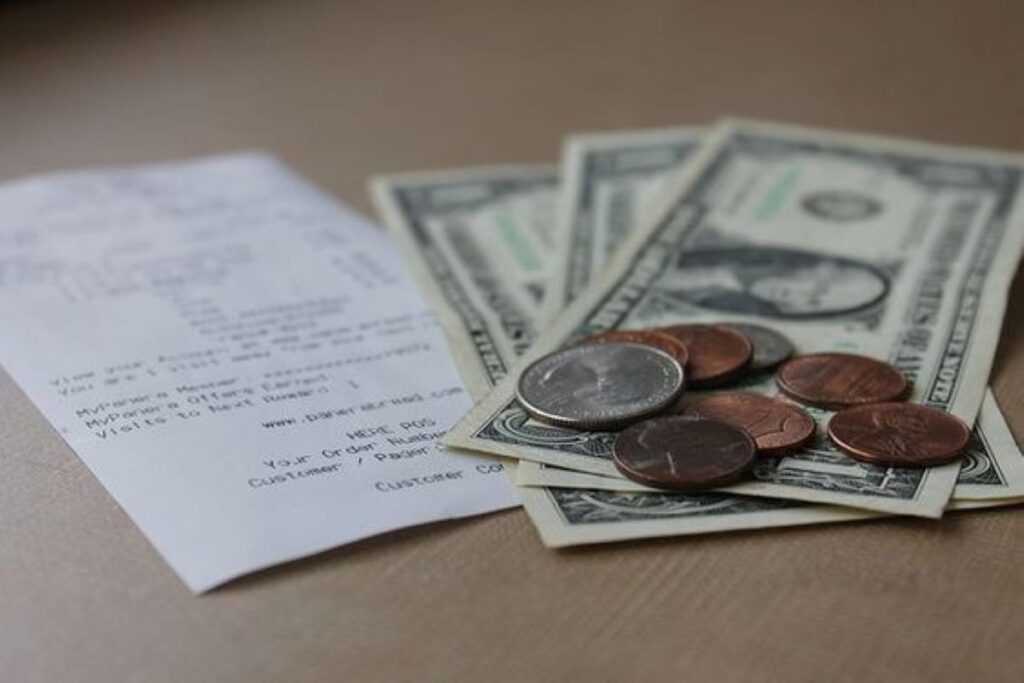Tipping has been a part of American culture for a long time, and most people don’t think twice about it—usually, especially since it is reserved as a reward for great service from an employee.
These days, self-checkout service has become quite common, eliminating interactions with human employees; however, customers are still being prompted to tip, which begs the question: Who is getting those tips?
Tipping Prompts Have Become Part of Self-Checkout Service
These days, shoppers are subjected to tipping pressures, even when interacting with machines, because business owners have deemed it fit to integrate tipping screens into their self-checkout machines. It has become a common practice all over the US, and many customers are groaning.
Self-checkout Machines Are Everywhere
Regardless of where you are, there will most likely be an unstaffed self-service machine that can be used to complete your purchase. Most of them have tipping screens that prompt users to leave up to a 20% tip even though they did all the work themselves, and this leaves many feeling emotionally blackmailed.
ALSO READ: Walmart Shoppers Rail Against “Insane” Change to Self Checkouts Costing $100
Why Tip During Self-Checkout?
Many shoppers are concerned that leaving a tip at a self-checkout machine defeats the purpose of using the machine. After all, its sole purpose is to replace service staff, which means its owners can reduce labor costs. Many now wonder why they need to tip if no human is involved and who is getting their tips.
Pressured To Tip
These tipping screens at self-checkout are pushing people to leave a tip when they normally wouldn’t have. After all, tips are meant for humans who provide good service. These days, even when a staff member has done little to nothing to assist a customer, a tipping screen comes up, putting on the pressure. One survey revealed that 51% of people gave a tip when a screen requested it, and 54% felt forced to tip when the employee turned the screen away.
The Effect of Digital Payment on Tipping
Tipping screens have become commonplace, and adopting digital payment systems across many sectors has made it easy for businesses to integrate a tipping screen into the transaction process. In the previously mentioned survey, 45% of respondents claimed they’ve been leaving more tips because of the proliferation of these tip request screens.
How the Pandemic Affected Tipping Behaviors
Tipping screens have been around since before the COVID-19 pandemic. However, it is believed that tipping behaviors during the pandemic have something to do with the entitlement tipping screens now seem to represent. While the virus raged on, human empathy was at its highest, causing customers to use tips as a way of showing their support for those, businesses and staff alike, affected by the pandemic in any way.
It’s Just Business
Integrating tip request screens that prompt customers to leave a tip during self-checkouts is an excellent opportunity for businesses to make extra money at practically no cost. Of course, many business owners say that proceeds from these tipping cues benefit employees as they significantly increase gratuities and boost staff pay. However, people still wonder if justice is being done.
Customers Don’t Mind Tipping Workers Who Deserve It
Tipping is an act of appreciation for staff for a job well done. Naturally, a patron who tips expects it to go straight to the worker who deserves it. In some places, like California, there are laws that prohibit businesses from taking any part of a tip left for staff, but with self-checkout machines, there is little guarantee of that.
POLL—Should the Government Implement Stricter Penalties To Combat Retail Theft?
Who Gets the Tip?
Tipping a staff directly is the only sure way to know they got the money you willingly gave in response to good service. When it is done via a screen, there is no way of knowing where that money actually goes, despite what business owners have said.
Many who leave these tips most likely wouldn’t be happy to know it could hypothetically be kept by the business rather than the staff. Besides, people wonder how businesses decide who gets the tip when machines replace staff.
Even Apps Now Use Automated Tipping
Automated tipping may have started with self-checkout machines, but it has spread to other employee-free shopping experiences, including apps. Take, for instance, the travel app Hopper. An investigation into its operations revealed that it automatically adds a tip at checkout despite no contact with an employee.
WATCH: Customers Condemn $21 Subway Sandwich Amid California Minimum Wage Hike
Tipping Is the Customer’s Choice
If you do all the work by interacting with an unmanned self-checkout machine, being asked to leave a tip can be frustrating. It is essential to know that tipping or not doing so is ultimately up to you, even if there is pressure in the form of a hovering employee. It is also crucial to know that if a tip is automatically added during checkout, you can opt out, especially if you’re not confident the tip is going into the right pocket.
You Might Also Like:
Hillary Clinton’s D-Day Comments Sparks Outrage
“Big Bang Theory” Fans Congratulate Kaley Cuoco for Career Milestone
Kentucky Farmer Discovers Coins Worth Millions in a Field
Stephen King Blasts Trump on X, Outraging His Supporters
California Moves to Ban Reusable Grocery Bags
